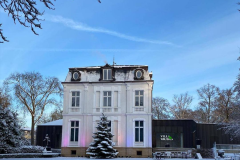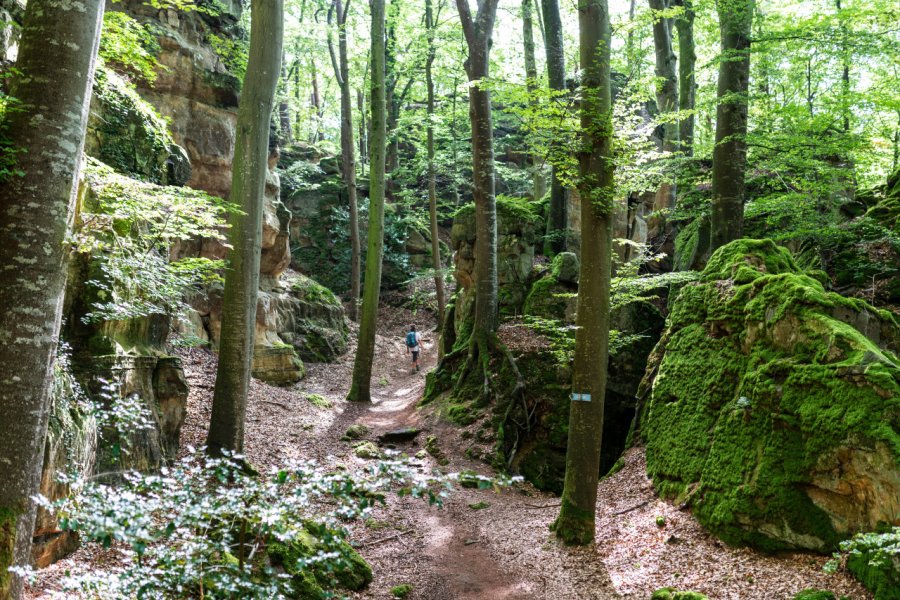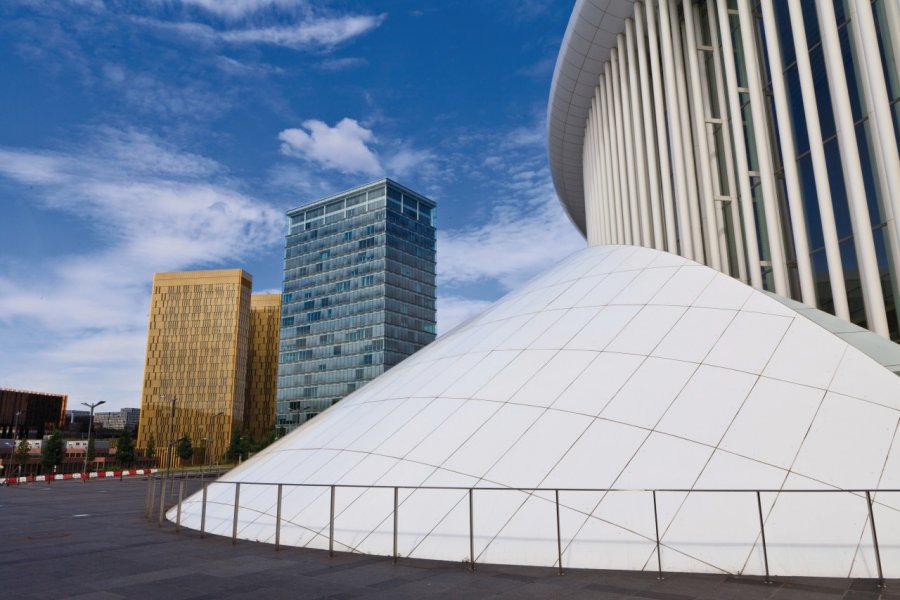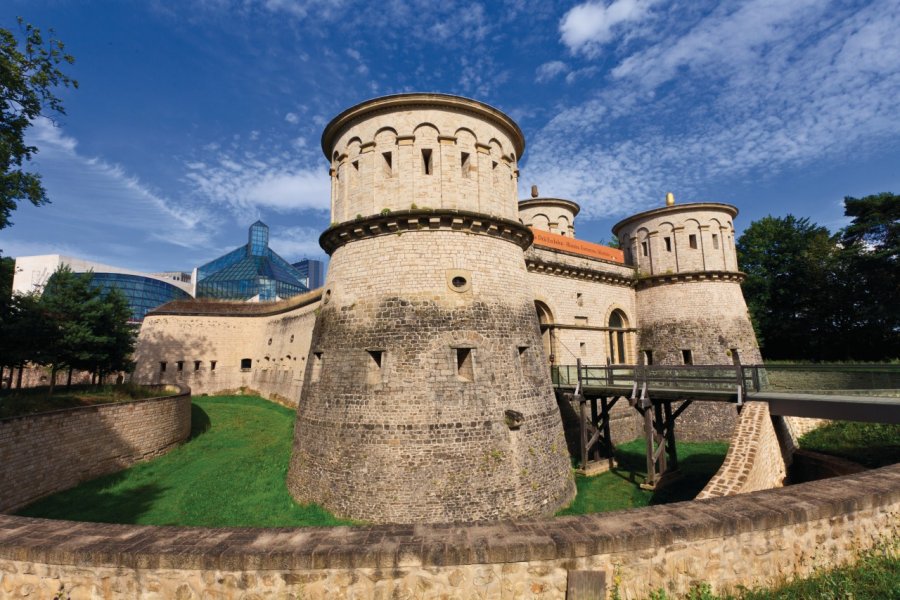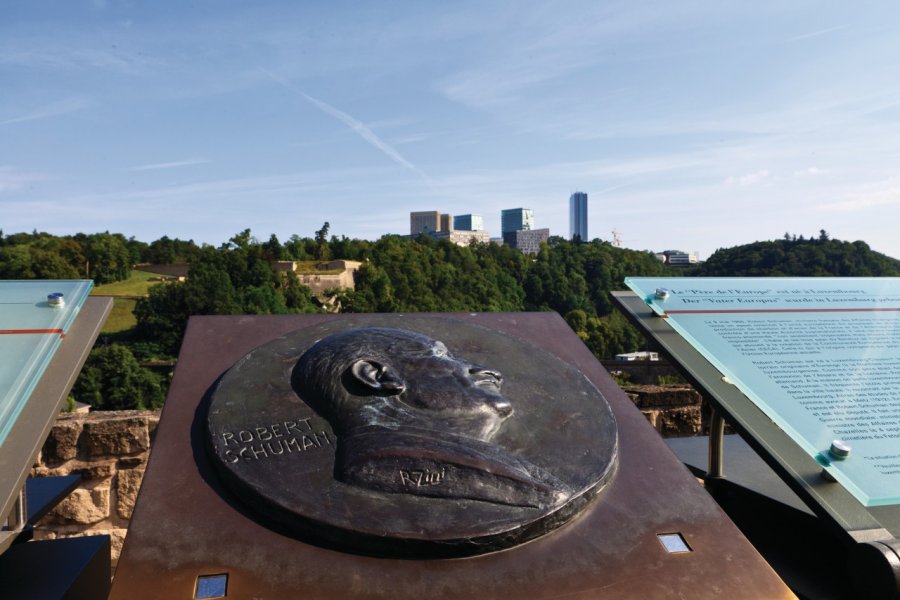Travel guide Luxembourg-Ville
A nerve centre in the Grand Duchy, despite its small size, Luxembourg-City has an unprecedented dynamism. A tourist step in Luxembourg-City, a stay of several days, is therefore indispensable to discover or rediscover this city. Every day, from dawn, the go-and-come from frontier workers contributes to this movement… At noon, office staff and businessmen find themselves at the lunch break in the many restaurants in the city centre, such as those in the arms square. Luxembourg-Ville is also very pleasant for its inhabitants (even though prices for real estate are practically comparable to those of Paris!). A cultural city par excellence, it gathers on a very restricted territory (High City, Lower City, delimited by the famous bunkers), an impressive number of museums and cultural institutions! The artistic life beats its full, and the theatres in the evening fill in… The city centre and the surrounding area have a very unique historiciste architecture. This architectural movement of the late th century, horse between eclecticism and Art nouveau, draws inspiration from history. There is a real architectural patchwork on the facades of the city! A neo-Renaissance quotation, here a wooden architecture of the medieval era, a neo-classical façade with baroque decor, a building adorned with stained glass stained glass windows and balconies to vegetable mixers, revealing Art Nouveau…
Historicism reigns master over the late century architecture of the Grand duchy.
As for the setting up of the Mudam in the Kirchberg plateau, he gives his letters of nobility to contemporary art.
At the end of the day, the bars and other addresses are bustling, and do not end up attracting ever-connected clientele. Elegance, refinement, in the image of the downtown fashion shops. Lovers of calm and picturesque will find in the Lower Town and the Grund, a soothing place where it makes good living… As for the districts of Clausen, Bonnevoie and Hollerich, they are winning to be known, which is why the editorial advises you to discover unusual and often astonishing addresses. Good discovery and welcome to Luxembourg-City!
What to see, what to do Luxembourg-Ville?
-
Book an activity
-
Customized travel
- Addresses to visit Luxembourg-Ville
Weather at the moment
Suggested addresses Luxembourg-Ville
Travel Luxembourg-Ville
-
Find a hotel
-
Car Rental
-
International e-SIM package
-
Find a local agency
Find unique Stay Offers with our Partners
Discover Luxembourg-Ville
The nerve center of the Grand Duchy, despite its small size, Luxembourg-City has an unprecedented dynamism. A stay of several days in Luxembourg City is a must if you want to discover or rediscover the city. Every day, from dawn onwards, the comings and goings of cross-border workers contribute to this movement... At midday, office workers and businessmen meet for lunch in the many downtown restaurants, such as those on Place d'Armes. Luxembourg City is also a very pleasant place to live. A cultural city par excellence, it boasts an impressive number of museums and cultural institutions in a very small area (Ville Haute, Ville Basse, bounded by the famous casemates)! Artistic life is in full swing, and theaters fill up in the evenings..
Pictures and images Luxembourg-Ville
The 12 keywords Luxembourg-Ville
1. #Castles

Coveted over the centuries by many foreign powers, the castles and the remains of the fortress of Luxembourg are among the main tourist sites of the Grand Duchy. Of the 109 castles listed in the Middle Ages, whose purpose was military defence, 76 have withstood the ravages of time and some have been renovated.
2. #Cosmopolitanism
Luxembourg is home to a multitude of identities and citizenships (170 nationalities in a territory of almost 610,000 inhabitants). This, combined with the country's history of being tossed back and forth between the great neighboring nations that invaded it in turn, explains why there are so few "children of the land" whose nationality is 100% Luxembourgish.
3. #Ecology
Luxembourg is very committed to the preservation of wildlife and nature. Whether it is the forests in the north, Little Switzerland or the areas that were once the stronghold of the mining industry, everything is done to give nature its rights. The Grand Duchy is also an active participant in the European "Natura 2000" programme.
4. #Europe
Luxembourg was one of the founding members of the European Union, co-signing the 1948 Brussels Treaty and joining the ECSC in 1951. The capital is also home to several European institutions, including the Court of Auditors and the European Commission. Luxembourgers are convinced Europeans!
5. #Finance

Listed in the register of financial centres and renowned for its discretion, the Grand Duchy enjoys an economic attractiveness linked to its advantageous tax system as well as its economic, political and social stability. With almost 200 financial institutions, Luxembourg City is also the largest concentration of banks in the world.
6. #GrandDuchy

A Grand Duchy is a territory whose head of state is a Grand Duke or Grand Duchess, a title that places him or her in the nobility just below the king, but above a sovereign duke or prince. Today, Luxembourg is the only Grand Duchy in the world! It has been recognised as such since the Treaty of London of 19 April 1839.
7. #Great Region
Luxembourg, along with several neighbouring regions, is part of the Grande Région (whose history is very complex). The Grande Région is the economic engine of an area that was devastated in the 1970s and 1980s by the end of the mining industry. It has a population of 11.6 million and covers an area of 65,000 km². It acquired a legal personality in 2010.
8. #Industrial
The current boom in its service activities has not, however, made Luxembourg forget its industrial culture, which is based mainly on metallurgy and mining. Numerous sites, notably the Minett Park in Fond-de-Gras in the Terres rouges, bear witness to and honour the Grand Duchy's rich industrial past.
9. #Lëtzebuerguesch
Lëtzebuergësch is one of the country's three official languages and the mother tongue of 200 000 people. Previously a simple local dialect (a "patois"), it was recognised as a national language in 1984 thanks to a law on multilingualism, with the aim of consolidating the identity of Luxembourgers around a common heritage, their language.
10. #Navetier
A generic term for the many foreign workers who cross the border every day. 194,000 are counted every day. Half of these commuters (or border workers) are French. There is a guide for French-Luxembourg border workers and a website dedicated to them (www.lesfrontaliers.lu).
11. #Hikes
Whether on foot or by bike, hiking is present in all four corners of the Grand Duchy of Luxembourg. There are more than 5,000 km and more than 200 marked trails for walking alone and 600 km for cycling, not to mention the ever-increasing number of mountain bike trails.
12. #Schueberfouer

Also known as the "Fouer", the Schueberfouer is Luxembourg City's traditional funfair, which brings the summer season to a close and sets the city abuzz with activity. Every year, some 2 million visitors flock to the Champ du Glacis, where the traditional Ferris wheel and no fewer than 260 rides and food stalls are set up.
You are from here, if...
You use " moien " without moderation and all day long. It's a way of greeting that's much more appreciated and common than a bonjour or bonsoir, whether on the street, in the stores or among friends.
You juggle French, German and Luxembourgish in a single conversation. Since most Luxembourgers are trilingual, it's not uncommon to hear all three languages at the same table, while shopkeepers switch from one to the other depending on the customer.
You respect the Highway Code, cyclists and park properly. Luxembourgers are very disciplined, and there's no question of cheating by not paying for your parking space!
You find it normal not to throw your papers on the ground. What a pleasure it is to stroll along the sidewalks of a big city, free from excrement, cigarette butts and the other residues so common in European capitals..

